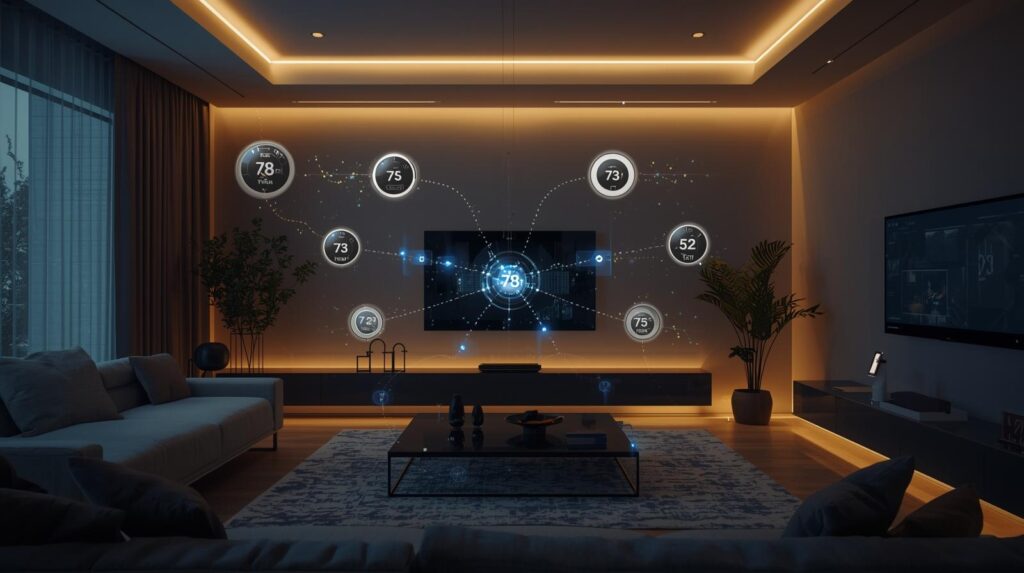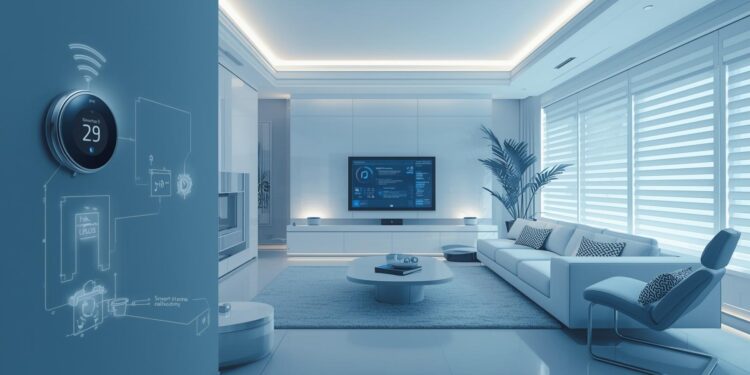The Internet of Things (IoT) has heralded a new era in home automation, transforming how we interact with our living spaces. The integration of IoT devices into home automation systems is not just a trend; it’s a technological evolution that promises to enhance convenience, improve energy efficiency, and increase security. For leaders in technology and business strategy, understanding this transformation is crucial for staying ahead of the curve.
The concept of smart homes has been around for decades, but it’s the advent of IoT that has propelled it into mainstream adoption. IoT devices, such as smart thermostats, lights, and security systems, are interconnected through the internet, allowing homeowners to control their environment remotely and more efficiently.
One of the most significant advantages of IoT in home automation is the convenience it offers. With a single app or voice command, homeowners can control multiple devices simultaneously, whether it’s adjusting the thermostat, turning off lights, or locking doors.
For Chief Technology Officers (CTOs) and Innovation Managers, this demonstrates how IoT can streamline operations and enhance user experience, a lesson that can be applied across various business applications.
IoT devices contribute significantly to energy efficiency, an important consideration for both residential users and businesses. Smart thermostats, for instance, learn user preferences over time and optimize heating and cooling schedules to reduce energy consumption.
For business strategists, this highlights an opportunity to align technological advancements with sustainability goals, showcasing a commitment to environmental responsibility.
Security is a critical aspect of home automation that has seen remarkable improvements thanks to IoT. Smart security cameras, doorbells, and locks offer real-time monitoring and control, providing homeowners with peace of mind.
Modern IoT security systems offer features like motion detection, facial recognition, and instant alerts sent to smartphones. These capabilities ensure that users are promptly informed of any unusual activity, enhancing the overall security posture.
For innovation managers, the ability to leverage such technologies can be a game-changer in industries like property management and real estate, where security is a paramount concern.
While IoT devices provide enhanced security, they also raise concerns about data privacy. The collection and transmission of personal data over the internet make these devices potential targets for cyberattacks.
Business leaders need to be cognizant of these risks and implement robust cybersecurity measures to protect sensitive information, thereby maintaining consumer trust and compliance with regulations.
A key challenge in the realm of IoT and home automation is ensuring interoperability among devices from different manufacturers. The lack of standardization can lead to compatibility issues, hindering the seamless integration of devices.
To address interoperability challenges, industry leaders are working towards establishing common standards and protocols. The adoption of frameworks like Matter, which aims to unify device communication, is a step in the right direction.
For CTOs, understanding these standards and advocating for their adoption can facilitate smoother technology integration within their organizations.
Creating a cohesive ecosystem where devices work in harmony requires collaboration among tech companies. By fostering partnerships, businesses can deliver more comprehensive solutions that enhance the user experience.
For business strategists, this underscores the importance of strategic alliances and partnerships in driving innovation and expanding market reach.
The landscape of home automation is continuously evolving, with IoT at its core. Emerging trends suggest even more profound changes on the horizon.
The integration of artificial intelligence (AI) with IoT devices is set to revolutionize home automation. AI-driven analytics can predict user behavior, automate routine tasks, and offer personalized experiences.
This presents an opportunity for innovation managers to explore AI applications that can transform industries by enhancing automation and decision-making processes.

Voice assistants like Amazon Alexa, Google Assistant, and Apple Siri are becoming integral to smart home ecosystems. Advances in natural language processing enable these assistants to understand and respond to complex commands more accurately.
For business leaders, this trend highlights the potential of voice-driven interfaces in improving customer interactions and streamlining operations.
While IoT devices offer numerous benefits, there are challenges that must be addressed for successful implementation.
As the number of connected devices grows, scalability becomes a pressing concern. Ensuring that infrastructure can support a vast array of devices without compromising performance is crucial.
CTOs must prioritize scalable solutions that can accommodate future growth while maintaining operational efficiency.
With the proliferation of IoT devices, regulatory compliance becomes increasingly complex. Adhering to data protection laws and industry standards is essential to avoid legal pitfalls and ensure consumer confidence.
Business strategists should stay informed about regulatory changes and incorporate compliance into their strategic planning.
IoT devices are reshaping the landscape of home automation, offering unprecedented levels of convenience, efficiency, and security. For technology leaders and business strategists, leveraging these advancements requires a strategic approach that considers interoperability, scalability, and data privacy.
By embracing IoT and its potential, businesses can not only enhance their operations but also position themselves at the forefront of innovation in an increasingly digital world. As we look to the future, the continued evolution of home automation promises exciting opportunities for those willing to adapt and innovate.




